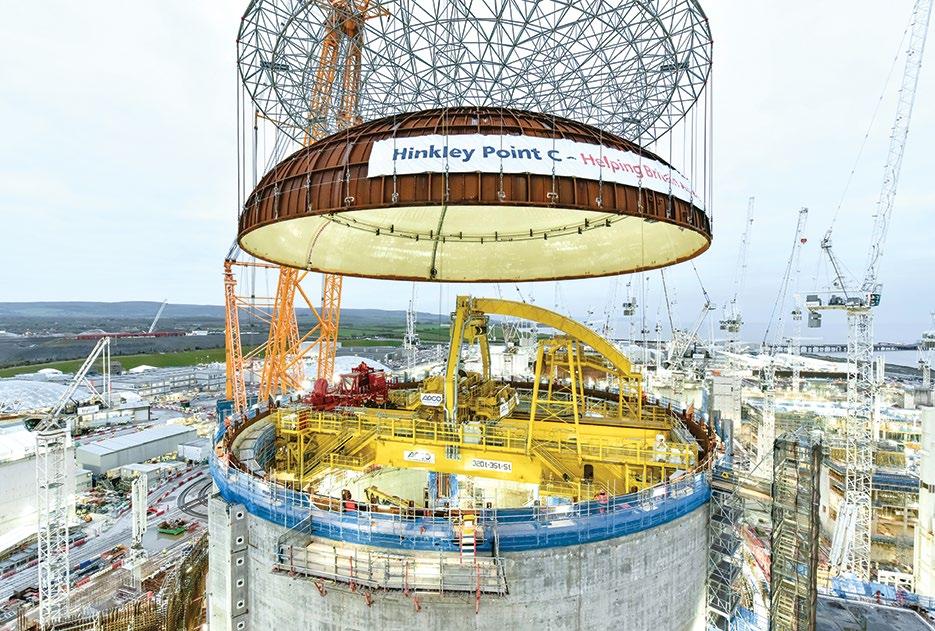
3 minute read
Dome lift at Hinkley Point C
Dome lift at Hinkley Point C
At the end of last year Saren’s 5,000 tonne SGC-250 - affectionately named Big Carl after the company’s technical director Carl Sarens - successfully lifted the 245 tonne, 47 metre diameter, 14 metre high dome onto Hinkley Point C’s first reactor building.

The major milestone closes the roof on the site’s first, 44 metre high reactor building, allowing the nuclear reactor to be installed later this year. The power station’s two nuclear reactors will provide consistent low-carbon electricity for six million homes, for around 60 years, while boosting Britain’s energy security.
Starting at 07:20 in the morning the lift was planned to take advantage of a ‘weather window’ that ensured the 90 minute lift could be completed in low wind conditions.

The dome is the top part of the building’s inner containment - a steel cylinder encased in concrete. At 47 metres diameter, it is wider than the dome of St Peters Basilica in Rome - only 42 metres - and the one on the Panthéon in Paris - 44 metres. It is made up of 38 prefabricated panels which were shipped to Hinkley Point C and welded together onsite. Prefabrication and modular construction are key features of Hinkley Point C’s construction.
Earlier in December, the ‘Polar Crane’ was lifted into place on top of the building’s third and final steel liner ring. This internal overhead crane will rotate 360 degrees above the reactor and be used for refuelling and installing equipment. This was the last item that needed to be lifted into position before installing the dome.

Nuclear Island area director Simon Parsons said: “Building the UK’s first nuclear power station in a generation is a challenging job. Installing the dome allows us to get on with the fitting of equipment, pipes and cables, including the first reactor which is on site and ready to be installed.” Big Carl was shipped to the Hinkley C site almost four years ago on more than 400 trucks. It was then rigged with 118 metres of main boom and a 52.3 metre luffing jib. In this configuration the crane can handle 4,250 tonnes at a radius of 40 metres and take a staggering 883 tonnes out to its maximum 170 metre radius. In terms of counterweight, the crane uses its 52 specially reinforced shipping containers which are filled with ‘locally sourced ballast material’ such as sand, to provide 100 tonnes of counterweight each - up to 5,200 tonnes in total. ■












